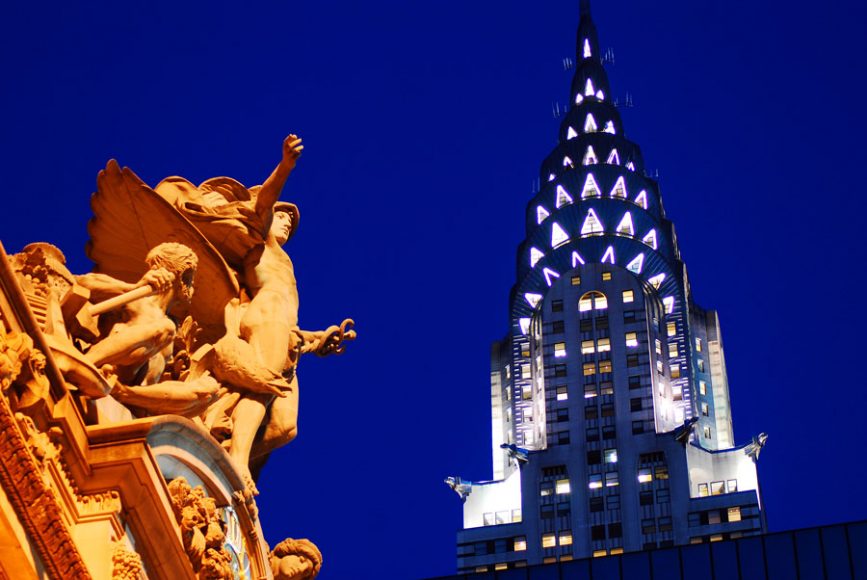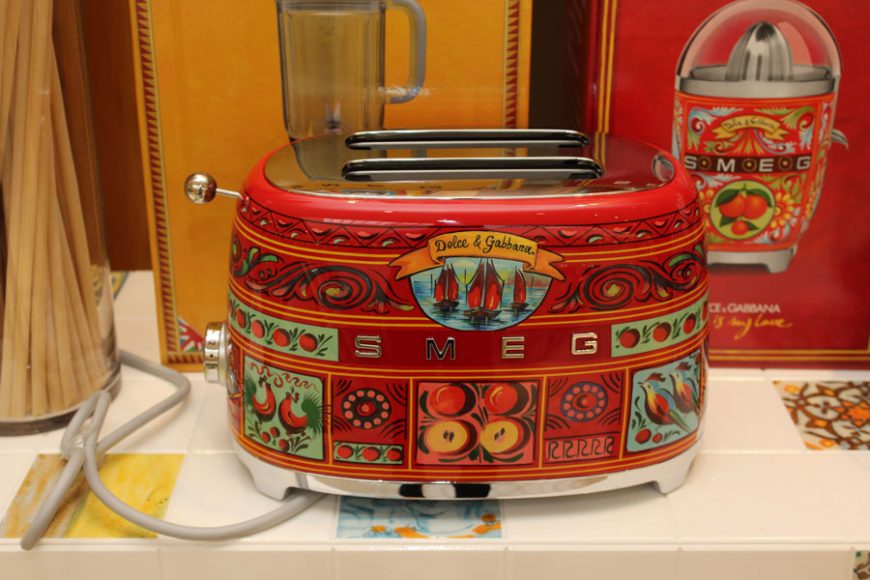Crawling down the West Side Highway on my way to an assignment in Lower Manhattan recently, I noticed the IAC (InterActiveCorp) Building billowing out on 11th Avenue.
“That’s an intriguing building,” I said to my driver, Marcel Lutama, with whom I’ve had many traffic-induced architectural conversations.
“Pfffft,” he snort-retorted.
Clearly, one man’s Frank Gehry marvel is another man’s garish monstrosity.
Beauty, it is said, is in the eye of the beholder. (And I thought it was about bone structure. See Johnny Depp. But that’s another story.)
And so it is with design. But is all design meant to be beautiful? Is all art? And is design also art?
The answer to all three is, in the words of Ira Gershwin, “It ain’t necessarily so.”
Design implies a certain understated usefulness, as in modernist architect Louis Sullivan’s famous dictum: “Form follows function.” A Louis Vuitton handbag, a Jason Wu gown and a Ferrari may all be beautifully designed, but the point of each is to hold your wallet, keys, phone and makeup; gussy you up for a big event; and get you there respectively. Yes, you could choose other “vehicles,” so to speak. But that doesn’t make these three brands any less useful.
Whereas art, though it is designed, is only about itself. Vincent van Gogh may have created his sunflower paintings poignantly to hide the cracks in his Yellow House in Arles, France, as he prepared to welcome fellow painter Paul Gauguin in the hope of creating the Studio of the South and enjoying some human companionship — yet that doesn’t detract from their artfulness. You don’t have to know this story at all to appreciate the beauty and humanity of these works.
Life isn’t all van Gogh sunflowers and Louis Vuitton handbags, though. The reader may pause here to consider his or her own idea of bad design — like virtually every ladies’ room in which the hand dryers and paper towel dispensers are always a mile from the sinks and there are never enough hooks or pull-down shelves in the stalls for coats and purses.
To this we offer two examples from history. Ford Motor Co.’s Edsel (1957-59) was such a disaster that the hapless car has become synonymous with commercial failure. A number of theories have been advanced as to why this is so. While experts say the car was badly marketed, it ultimately came down to an unappealing style and what Consumer Reports said was poor workmanship. In other words, it was badly designed.
The Edsel of modern times may have been New Coke. (Remember that?) Coca-Cola, whose chief product has a distinctively crisp taste, nevertheless wanted a sweeter soda to compete with Pepsi-Cola, preferred in blind taste tests. So in 1985 it came out with New Coke, to which the public had an immediate aversion — forcing the company to bring back Coca-Cola Classic as an alternative to what became Coke II, which mercifully exited the market in 2002. (Some think this was all a ploy to make Classic Coke more beloved, but really, only Machiavelli was that Machiavellian.)
It’s harder to say what makes bad art, because, again, art doesn’t have to work the way a car does or rack up sales the way a soft drink does. What we can say is that in the era of modern art (1860s-1970s), the postmodernism of the late 20th century and our own time, many artists have been more concerned with the expression of ideas than with traditional, classical beauty. Willem de Kooning’s “Marilyn Monroe” (1954, oil on canvas, Neuberger Museum of Art collection) is no archetypal glam portrait of the sex goddess, featuring as it does a red slash of a mouth and lopsided Cleopatra eyes. But it conveys the harshness of Hollywood’s blond ambition while remaining true to Abstract Expressionism’s desire to express and incite emotion through shapes and colors.
There are, however, works that represent great design, great art and great beauty, including one that has been in the news again recently — the Chrysler Building in Manhattan. Created by architect William Van Alen for Walter Chrysler, founder of the Chrysler Corp., and topped the week before the stock market crashed in October of 1929, the Chrysler Building remains perhaps New Yorkers’ most beloved building, as well as the tallest brick one with a steel framework in the world at 1,046 feet. With its sleekly elegant, tapered, terraced silhouette — punctuated by modernist eagles, gargoyles and 1929 Chrysler radiator caps — along with a diamantine tower and spire, this national landmark is also one of the finest examples of Art Deco style. And it’s on the market, again.
In a Jan. 13 New York Times piece, Big City columnist Gina Bellafante wondered who would buy it:
“Despite its significance, it is plagued by the same problems that face so many office buildings in the city that went up between the 1920s and the 1970s….They lack the light and efficiency of contemporary working spaces and are hugely expensive and time-consuming to repair and modernize, with warrens of rooms, interior columns and low ceilings.”
Her comments reflect a shifting design aesthetic away from intimate, detailed, durable spaces filled with equally well-crafted objects to transparent open-floor plans at home and at work dotted with angular furnishings made of disposable materials that afford you the greatest opportunity to do what you want, which seems increasingly to spend as little time as possible caring for the house and the workplace.
But does this aesthetic lend itself to great design, let alone great art characterized by great beauty and individuality? Experts doubt it.
“A lot of new houses lack quality of space,” says Ridgefield architect Brad DeMotte, who describes a decline in postwar architectural design on Page 18. “But many people would rather have a bigger house that lacks detail than a smaller one with character and detail.”
This is particularly true for the younger generation, he adds.
“A millennial doesn’t want what he perceives to be clutter. There’s no market for sets of dinnerware.”
Yet graceful sets of Wedgwood china or the curving reliefs of French provincial furniture help convey who you are. Their lack suggests a lack of individuality.
“A lot of houses are starting to look the same,” DeMotte says.
It may seem counterintuitive, but this minimalist, cookie-cutter aesthetic is balanced by an excessive awareness of itself.
“People took design for granted,” says George G. King — the new deputy director of ArtsWestchester, New York state’s flagship arts council (Page 80). “Now…everybody wants to be a designer.”
The “notice me” quality of design threatens what has defined it — its usefulness. In the publishing world, it makes it hard to distinguish between editorial content and advertising, says book artist Chris Perry (Page 68).
“I love design, but I love it in service to something else,” he says.
Yet now the something else seems to serve it. The Jan. 13 cover of The New York Times Magazine — “What Is Beauty For?”, an article that questions beauty’s evolutionary role — featured the word “what” over “The New York Times Magazine” banner as the other letters cascaded around an image of a strikingly plumed bird.
King notes that he gave up trying to read the end credits of the Oscar-nominated “The Favourite,” which presents text vertically throughout, perhaps as a metaphor for the characters’ myopia. Form, it seems, no longer follows function. Function follows form.
Yet the aesthetic of design may be changing again.
“I do think things are coming back,” says Rowayton interior designer Lynn Morgan. “You’re seeing a lot more Old World glamour.”
Retro is joined by high style in the every day, as in Smeg Dolce & Gabbana’s brightly patterned appliances.
And the Chrysler Building may see new life as part of a billionaire’s art collection, an apartment building or a home for Amazon.
Will it, centuries from now, be to New York what the Parthenon is to Athens? King thinks it will.
The jury’s still out, however, on Gehry’s ICA Building.






